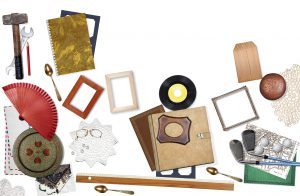Downsizing and decluttering are part of life
March 12, 2015

Is it time to start downsizing and decluttering your life?
That was the theme of an educational and entertaining presentation in Oakville last week titled Avoiding Transmission Trauma by Elaine Frost.
Frost is the founder of Trusted Transitions and the joint author of the book What Next? Navigating Later Life Transitions.
Downsizing usually happens later in life. It can be motivated by an event that requires you to move or just a personal decision influencing you to live in smaller accommodations.
Moving to smaller place can be stressful; from packing and moving, to the emotional strain of leaving a place you called home for so many years.
The advice given in the presentation was to be prepared. Begin looking at the options. Regardless of when a move might occur, it makes sense to have less stuff in your house.
Frost refers to that as putting your house on a diet. If you downsize your living accommodation you might find that successful decluttering will give you more livable space.
Clutter may be what you do not use or love, things that are untidy or disorganized, too many things in too small a place or anything broken or unfinished.
As you age it is safer to have fewer personal items in your house. A cluttered living environment is an accident waiting to happen.
As a guide, consider using the 80/20 rule. We use 20 per cent of our possessions 80 per cent of the time. That can be a useful guide to follow when clearing out your living environment.
From her personal experience assisting people making transitions, Frost cited many reasons to counter the excuses to hold on to your possessions. Judging by the reaction from the audience, many found them entertaining.
No, you will not wear that favourite outfit again, especially if it no longer fits. No, this special item will not likely be worth a lot of money someday.
Finally, remember what you save for your children is something they generally not want. If there is something special your children would want, consider giving it to them now versus later.
There are many different ways to shed unwanted items. You can give them to family or friends or donate them to those in need.
Storing items can be done easily although in many cases it makes no sense. Frost has known people who have stored items at a cost that was more than its value brand new.
Many people Frost works with are making transitions later in life. Her recommendation was for her clients to get comfortable with the notion of continuous change.
Her simple advice is to use it or lose it. Give things to the next generation during your lifetime and finally if anything is broken just throw it out.
Planning your change of living accommodation ahead of time is the best way to embrace the adjustment with positive feelings. Get professional help and realize your needs are both physical and emotional.
One of Elaine’s final comments during her presentation was to focus on the future. Transition provides a great opportunity to move forward and enjoy new experiences and memories.
Those later years of life can go on for a long time. With that in mind Elaine Frost’s recommendation was to enjoy every minute.
